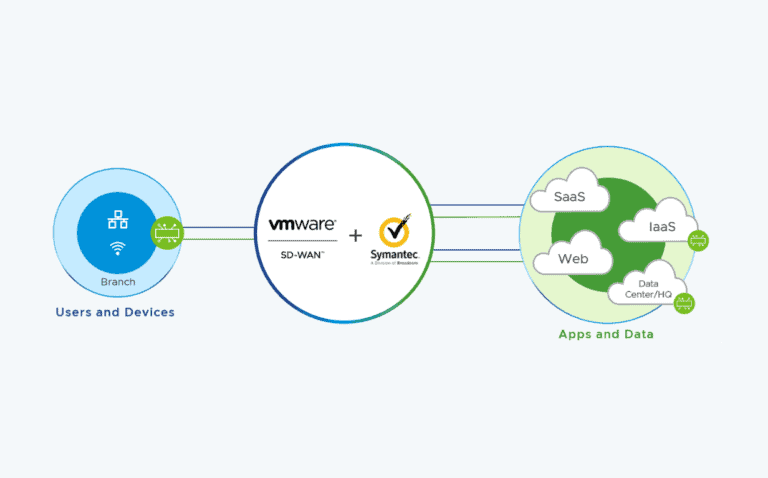At its Explore event in Barcelona, VMware was still unable to confirm its acquisition by Broadcom. However, The company’s already integrating its offerings with Broadcom subsidiary Symantec, ideally giving customers a unified SASE option in due time. It’s in advance of a likely coalescence of VMware and Symantec services – if the Broadcom acquisition actually happens, of course.
VMware uses the phrase “initial integration” to characterize its get-together with Symantec, aimed at delivering “consistent security for all edge locations, applications, users and devices.” Orchestration of VMware’s Security Service Edge can now seamlessly connect to the Symantec Cloud Secure Web Gateway (SWG). The company expects its partnership with Symantec to offer a “single-vendor SASE option” complete with what it classifies as the best networking and security capabilities on the market.
Tip: VMware makes its AI offerings as flexible as possible
VMware itself addressed the need to integrate its own SSE solutions with other vendors back in late 2022. At the time, VP & GM SASE Business Craig Connors (who now works at Cisco) stated that such integrations from different parties quickly become “clunky or difficult.” By contrast, SASE (secure access service edge) is supposed to be a “one-stop-shop solution” and aggregates as much IT management as possible in one place.
DLP functionality
To get back to the matter at hand: the newly announced integration allows VMware SD-WAN users to be provided with Symantec’s network security capabilities. Where network connectivity and policy management runs on VMware’s platform, Symantec Enterprise Cloud sits between end users and the Internet to capture threats and control access. A key focus of the latter is the implementation of DLP (Data Loss Prevention), which provides built-in compliance tools to encrypt sensitive data, among other things.
VMware is especially boastful about the benefits that the integration brings to enterprise customers, such as flexible management of devices and users in combination with, for example, Symantec’s Web Isolation solution to combat malware and phishing.
Also read: VMware Tanzu offers enhanced support for building AI apps
This “joint solution” is currently in tech preview form, but is expected in early 2024. With it, VMware aims to provide customers with an overarching SASE solution.
Targeting large parties
The market for a single-vendor SASE is growing rapidly, although Palo Alto Networks is currently the sole leader in that area, according to Gartner. As its criteria, the consulting firm stated late last year that such a leader not only offers all components for SASE, but also unifies them with a common management tool. Led by Broadcom, VMware could accomplish this, together with Symantec.
That would mean big changes could be on the way, though. After all, VMware Carbon Black’s security solutions (stemming from a 2019 VMware acquisition) overlap significantly with Symantec’s. As a result, choices will have to be made once both parties fall under Broadcom. That currently creates a level of temporary uncertainty as the acquisition is still unconfirmed, but even after that, it may take some time for customers to know what will and what won’t continue within the VMware offering. However, Symantec’s solutions that overlap with VMware’s are said to be more mature and thus the logical choice to continue, meaning VMware’s offering is likely to meet the chopping block at some point down the line.
As it happens, VMware partners and users are not too comfortable with Broadcom as a future home to VMware’s efforts. Broadcom’s reputation is one of a company that cuts costs dramatically from its acquired parties and focuses only on the largest, most profitable customers. This was the case with Brocade and CA Technologies, to name two examples. Broadcom’s business model relies on reducing R&D spending, cost-cutting elsewhere and a focus primarily on large players with significant IT budgets. At the moment, the tone around VMware is slightly different, as Tan Hock said in late May that the company aimed to “make additional investments to make this technology [virtualization, VMware’s core offering] work together seamlessly and much easier; and resources to help more customers adopt and deploy this great technology.”
It remains to be seen if Broadcom will actually adopt a different strategy once all regulators are satisfied with the acquisition.
Read more: Broadcom CEO pledges $2 billion yearly R&D spend to improve VMware
